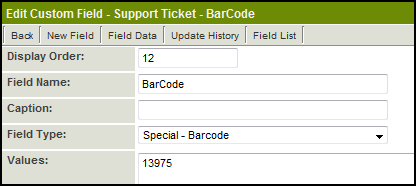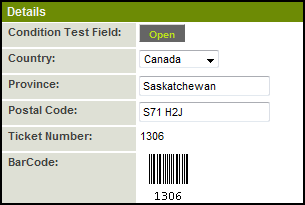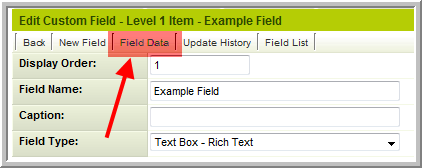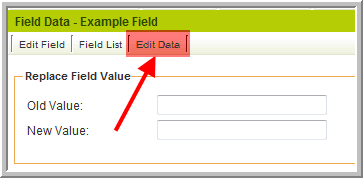Difference between revisions of "Upgrades by Category"
| Line 43: | Line 43: | ||
|May 2010 | |May 2010 | ||
|+ | |+ | ||
| − | [[Suppress E-mail Alert|Local Administrator E-mail Alert]] | + | |[[Suppress E-mail Alert|Local Administrator E-mail Alert]] |
* The e-mail that is sent to all current administrators when a contact is enabled as a Local User Administrator can be suppressed via [[Global Settings]]. | * The e-mail that is sent to all current administrators when a contact is enabled as a Local User Administrator can be suppressed via [[Global Settings]]. | ||
|May 2010 | |May 2010 | ||
| Line 165: | Line 165: | ||
* As with Level 2, you will be able to define a Level 3 Type to be the default when creating a new Level 3 record. Currently the first Level 3 Type in the list is selected by default. | * As with Level 2, you will be able to define a Level 3 Type to be the default when creating a new Level 3 record. Currently the first Level 3 Type in the list is selected by default. | ||
|October 2009 | |October 2009 | ||
| + | |+ | ||
| + | |[[Batch Update]] | ||
| + | * The [[Batch Update]] feature has been expanded to include Level 2 and Level 3 as well as Level 1. The fields that can be updated have also been expanded: | ||
| + | :* '''Level 1''': [[Status]], Owner and Person can all be batch updated. | ||
| + | :::[[Relating Contacts and Accounts to the Universal Tracking Application|Contacts]] can assigned to records with a given [[Role]] | ||
| + | :::UTA [[Configuring UTA Provider/Receiver (Consumer) Relationships|Consumer/Provider]] | ||
| + | :::Level 1 records can be [[Archiving Records|archived]] (see below) | ||
| + | :* '''Level 2''': [[Status]] and Owner | ||
| + | :* '''Level 3''': [[Status]] and Owner | ||
| + | :* '''Time & Expenses''': [[Status]] | ||
| + | * Whether or not the [[Batch Update]] tab is available to users can now be controlled on a per-[[Role]] basis for each [[UTA]] using [[Manager Permissions]]. | ||
| + | |May 2010 | ||
| + | |+ | ||
| + | |[[Archiving Records|Archive Level 1 Activities]] | ||
| + | * Level 1 activities can now be archived (via the [[Batch Update]] tab) so they no longer appear in the Level 1 list view. | ||
| + | * Reports can also be filtered based on whether or not the object has been archived. | ||
| + | |May 2010 | ||
| + | |+ | ||
| + | |[[Filter Person Based on Customer]] | ||
| + | * The contacts available to be selected in the '''Person''' standard field can be restricted to those belonging to the organisation (and it's sub-organisations) selected in the Company Standard Field at Level 1 | ||
| + | |May 2010 | ||
| + | |+ | ||
| + | |[[Disable Default Assign|Level 2: Disable Default Assign]] | ||
| + | * When a new Level 2 is created the current user is normally added to the '''Assigned''' standard field. A new setting will disable that behaviour. | ||
| + | |May 2010 | ||
| + | |+ | ||
| + | |Focus Highlight | ||
| + | * The field being edited will be highlighted. | ||
| + | * This feature only applies to the [[Universal Tracking Application]], but will be expanded to other system areas in future upgrades. | ||
| + | |May 2010 | ||
| + | |+ | ||
| + | |[[Record Lock|Record Unlock]] | ||
| + | * The [[Record Lock]] will automatically release all records that have been locked by a user when they log out. This can be used in association with the [[#Automatic Logout|Automatic Logout]] above. | ||
| + | |May 2010 | ||
| + | |+ | ||
| + | |[[Automatically Unpack Incoming Packages|UTA Data Exchange Automatic Unpack]] | ||
| + | * The data exchange can now be configured to automatically unpack incoming packages. | ||
| + | |May 2010 | ||
| + | |+ | ||
|} | |} | ||
| Line 284: | Line 323: | ||
When prompted enter the ''[[opportunityid]]'' (Level 1) or ''[[eventid]]'' (Levels 2 & 3) for the relevant record and a pop-up window will appear allowing you to directly edit the data in the selected field for that record. | When prompted enter the ''[[opportunityid]]'' (Level 1) or ''[[eventid]]'' (Levels 2 & 3) for the relevant record and a pop-up window will appear allowing you to directly edit the data in the selected field for that record. | ||
|October 2009 | |October 2009 | ||
| + | |+ | ||
| + | |[[Custom Field Type: Special - XML Data|Custom Field Type: Special - XML Data]] | ||
| + | * The XML field type can be used to store blocks of XML in a single field. | ||
| + | * Variables can be used to extract values from this block into other custom fields. | ||
| + | |May 2010 | ||
| + | |+ | ||
| + | |[[New Custom Field Type: Special - Spreadsheet|Custom Field Type: Special - Spreadsheet]] | ||
| + | * This field type is used to present the user with a spreadsheet that is compatible with MS Excel. This spreadsheet is stored as part of the record and can be exported as a .xls file, or be opened directly by MS Excel. | ||
| + | * Formulas are included. | ||
| + | * Information can be moved from MS Excel into this field using a macro within Excel. | ||
| + | * The values in one or more cells on the spreadsheet can be referenced as variables. | ||
| + | |May 2010 | ||
| + | |+ | ||
| + | |[[Custom Field Type: Select One - User Group|New Custom Field Type: Select One - User Group]] | ||
| + | * The Select One - User Group Custom Field can be used to link any entity (company, UTA Level 1, Level 2 etc.) to a User Group. | ||
| + | * User Groups are defined in Configuration, Roles and Permissions, User groups. | ||
| + | * On its own this field only links the group to the entity. It can then be used in conjunction with a display field ([[Web Page View]] or [[Custom Field Type: Read Only – System Variables|Read Only System Variables]] custom field) to display information derived from the contacts in the related Group. | ||
| + | |May 2010 | ||
| + | |+ | ||
| + | |[[Custom Field Type: Lookup - ICD Code|New Custom Field Type: Lookup - ICD Code]] | ||
| + | * The standard list of ICD Codes (International Statistical Classification of Diseases and Related Health Problems) is now available as a custom field type. | ||
| + | * The field stores the actual ICD code (i.e. ''G44.0''). If you wish to display the description (i.e. ''Cluster Headache Syndrome'') you can use the syntax '''@''field name''.value@''' in a [[Read Only - System Variables]] field or similar. | ||
| + | |May 2010 | ||
| + | |+ | ||
| + | |[[Attach a PDF to a Web Page View|Web Page View Field: SSattach]] | ||
| + | * Static PDF documents can now be attached to [[Web Page View]]s using [[ssattach]] at a defined page location desired using the following syntax: | ||
| + | <!--@ssattach(insert;@static pdf.value@;n)--> | ||
| + | :where ''n'' is the page number at which the PDF document should be placed. | ||
| + | |||
| + | * ssattach can now be used to attach PDF documents from multi-file fields: | ||
| + | : Syntax for single file field: | ||
| + | <!--@ssattach(after;@Cvfile.value@)--> | ||
| + | : Syntax for multiple file field: | ||
| + | <!--@ssattach(after;@Cvfiles.files@)--> | ||
| + | |May 2010 | ||
| + | |+ | ||
| + | |[[Web Page View|Web Page View Settings]] | ||
| + | * '''PDF Page Restriction''': Within the [[Web Page View]] custom field settings you can define a maximum number of pages for the resultant PDF. If the PDF generated has more than the specified number of page it will not be permitted to be automatically stored into the [[Multiple Files]] Custom Field specified in the '''Value Stores To''' setting. | ||
| + | * '''Automatically Use User ID as File Name''': When the [[Web Page View]] is stored the userid of the person who created it will be used as the file name. When used in association with the '''Save to Multiple File Field''' setting this will ensure each user is only permitted to generate and store one file in that folder ('''Keep Versions''' must be disabled on the [[Multiple Files]] Custom Field). | ||
| + | * '''Value Stores To''': The [[Multiple Files]] field selected can be enforced as the only file field the Web Page View can be saved into, rather than simply being the default. | ||
| + | |May 2010 | ||
| + | |+ | ||
| + | |[[Single File|Single File Custom Field Settings]] | ||
| + | * '''Disable E-mail Button''': Removes the ability of users to e-mail the file directly from within [[SmartSimple]]. | ||
| + | * '''No Deletion''': Prevents deletion of the file. It can only be replaced with a new file. | ||
| + | |May 2010 | ||
| + | |+ | ||
| + | |[[Multiple Files|Multiple Files Custom Field Settings]] | ||
| + | * '''PDF Merge Sort Order''': The PDF merge functionality will now allow you to specify the order in which the documents are merged. | ||
| + | |May 2010 | ||
| + | |+ | ||
|} | |} | ||
Revision as of 15:05, 1 May 2013
Contents
Security Enhancements
| Feature | Upgrade Date | Password Expiration You can now set a system-wide password expiration number of days. Each user will be forced to change their password once that number of days has passed. |
April 2009 | Password History You can set the number of previous passwords (to a maximum of 32) that the system will remember for each user. When changing their password, users will not be permitted to re-use a previous password until the specified number of unique passwords has been used. |
April 2009 | Instance Lock-Down
|
May 2009 | Remove User Access
|
May 2009 | Terminate User Session
|
May 2009 | Enable Logout
|
May 2010 | Custom Password Policy
|
May 2010 | Local Administrator E-mail Alert
|
May 2010 |
|---|
UTA Enhancements
| Feature | Upgrade Date | Standard Field Visibility Control
|
April 2009 | Level 1: Tabs for Contact and Account Lists
|
April 2009 | Level 1: UTA Contact and Account Filters
|
April 2009 | Level 1: Contact Restrictions
|
April 2009 | Level 2: Multiple Contact List
If you enable the Use Multiple Contact List checkbox on the Settings > Application Configuration screen you will be able to associate and control contact associations in a similar manner to Level 1 contacts. |
April 2009 | Level 2: Multiple Account List
If you enable the Use Multiple Account List checkbox on the Settings > Application Configuration screen you will be able to associate and control account associations in a similar manner to Level 1 contacts. |
April 2009 | Level 2: Role Filtering
You can restrict the selection of contacts that can be associated with Level 2 items by role. Previously you could only restrict by specified named contacts. An additional lookup text area has been added the bottom of the Level 2 Types Settings page to specify the roles. |
April 2009 | Disabling Specific Transaction Types by Template
|
April 2009 | Level 3 Template Formulas
You can now associate template formulas with Level 3 items in the same manner as Level 2 and Level 1 items. |
April 2009 | Submitted URL Redirect
|
May 2009 | Suppress New Level 2 or Level 3 Buttons
|
May 2009 | Batch Update Owner Field
|
May 2009 | Cross-UTA Transactions
|
May 2009 | Level 1 Submit Button Script
|
July 2009 | Level 2 and Level 3 Submitted URL
|
July 2009 | Level 2 Type Tab Label
|
July 2009 | Skills Matching Template
|
July 2009 | Advanced Logic to Suppress Contact Hyperlinks
|
July 2009 | Record Lock
|
October 2009 | Level 1, Level 2 & Level 3 Formulas
|
October 2009 | Advanced Logic to Suppress Public Notes
|
October 2009 | Internal Branch Filter
|
October 2009 | Level 3 Default Type Setting
|
October 2009 | Batch Update
|
May 2010 | Archive Level 1 Activities
|
May 2010 | Filter Person Based on Customer
|
May 2010 | Level 2: Disable Default Assign
|
May 2010 | Focus Highlight
|
May 2010 | Record Unlock
|
May 2010 | UTA Data Exchange Automatic Unpack
|
May 2010 |
|---|
Calendars
| Feature | Upgrade Date | Recurring Calendar Events
|
May 2009 |
|---|
Contacts/Accounts
| Feature | Upgrade Date | Contact and Account Standard Field Terminology
|
July 2009 | MS Outlook Contact Synchronization
|
July 2009 | Geocoding
|
October 2009 |
|---|
Custom Fields
| Feature | Upgrade Date | Auto Save Custom Field
|
May 2009 | Bar Code Custom Field
In the above example 13975 is the Custom Field ID of the "Ticket Number" field, which would display on the record as: |
May 2009 | Custom Field Tabs
In the above example there are 3 tabs named "Additional Details", "Company Information" and "Contract Details" Navigation between the tabs can be accomplished by either clicking on the Next or Previous buttons, or by clicking on the name of the tab you wish to access. |
May 2009 | MS Word Merge Enhancement
|
May 2009 | Field ID Variable
|
July 2009 | Custom Field Number Format
|
October 2009 | Single File Field Online Editing
|
October 2009 | Single/Multiple File Field Upload Workflow
|
October 2009 | Edit Data
When prompted enter the opportunityid (Level 1) or eventid (Levels 2 & 3) for the relevant record and a pop-up window will appear allowing you to directly edit the data in the selected field for that record. |
October 2009 | Custom Field Type: Special - XML Data
|
May 2010 | Custom Field Type: Special - Spreadsheet
|
May 2010 | New Custom Field Type: Select One - User Group
|
May 2010 | New Custom Field Type: Lookup - ICD Code
|
May 2010 | Web Page View Field: SSattach
<!--@ssattach(insert;@static pdf.value@;n)-->
<!--@ssattach(after;@Cvfile.value@)-->
<!--@ssattach(after;@Cvfiles.files@)--> |
May 2010 | Web Page View Settings
|
May 2010 | Single File Custom Field Settings
|
May 2010 | Multiple Files Custom Field Settings
|
May 2010 |
|---|
Document Management
| Feature | Upgrade Date | MS Word Merge Custom Field
|
April 2009 | Allow Merging of PDF Documents
|
April 2009 | Multiple File Field: Display Additional File Attributes for PDF Documents
|
April 2009 | Single File Field: Display Additional File Attributes for PDF Documents
|
April 2009 |
|---|
Personal Settings
| Feature | Upgrade Date | Time Format
|
May 2009 |
|---|
SmartFolders
| Feature | Upgrade Date | Inclusion of Folders in Search
|
May 2009 |
|---|
Variables / Variable Processor
| Feature | Upgrade Date | Report Record Count Variable
Example: To generate the number of records (equivalent to the number of rows in the report) for report with ID 12345 @ReportProperty(12345,recordcount)@ This can be used in a Web Page View or as a Read Only - System Variable to display a record count, as part of Submit Logic, or included in the title of a Portal shortcut to indicate how many records are at a given status (for example). |
October 2009 | Assign Level 1 Customer
|
October 2009 | User/Company Association List
|
October 2009 |
|---|
Web Forms
| Feature | Upgrade Date | Web Form Status
|
May 2009 | Convert Web Form to PDF
|
May 2009 |
|---|
Workflows
| Feature | Upgrade Date | Level 2 Creation
|
May 2009 | HTML E-mail Format
|
May 2009 |
|---|







